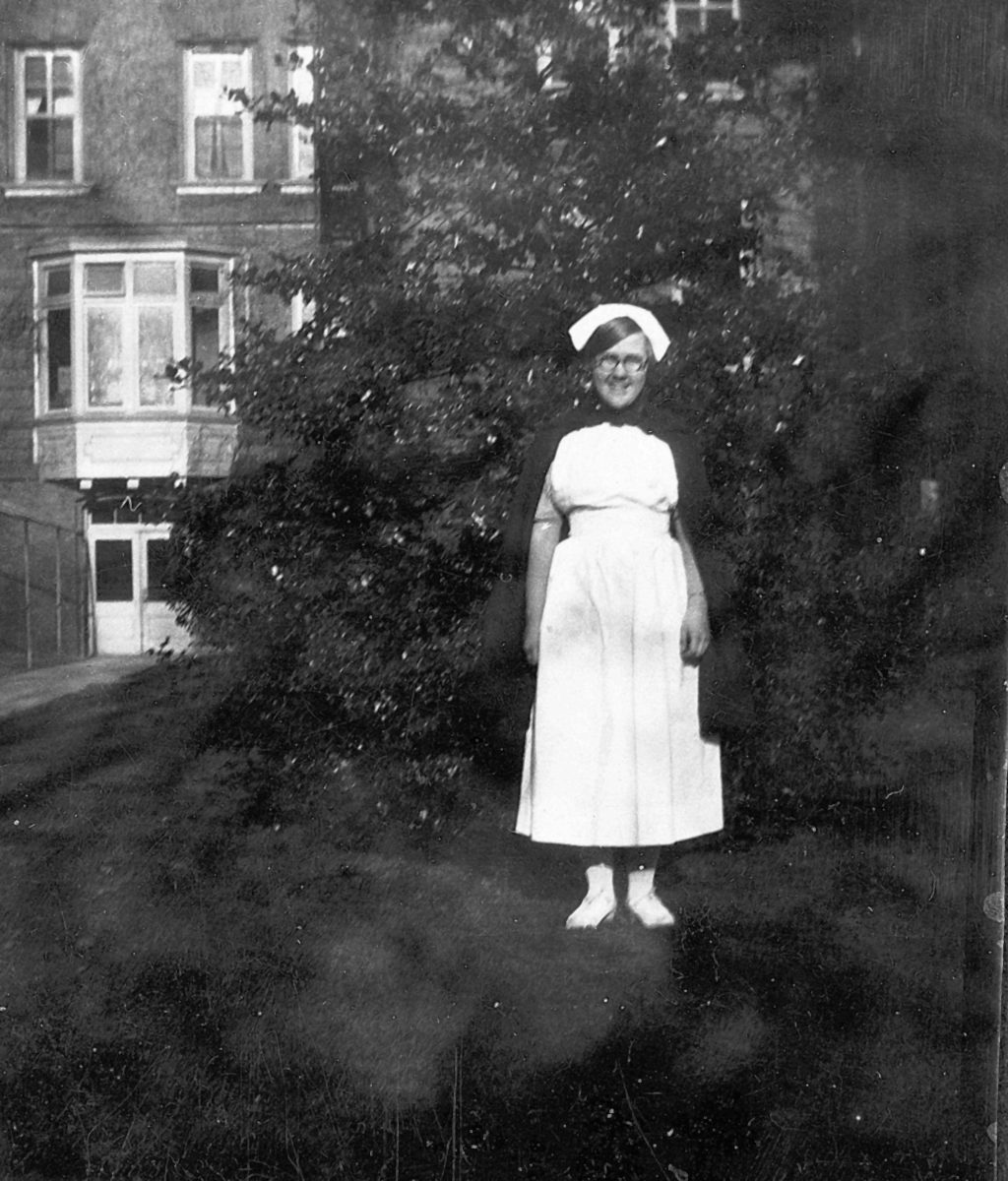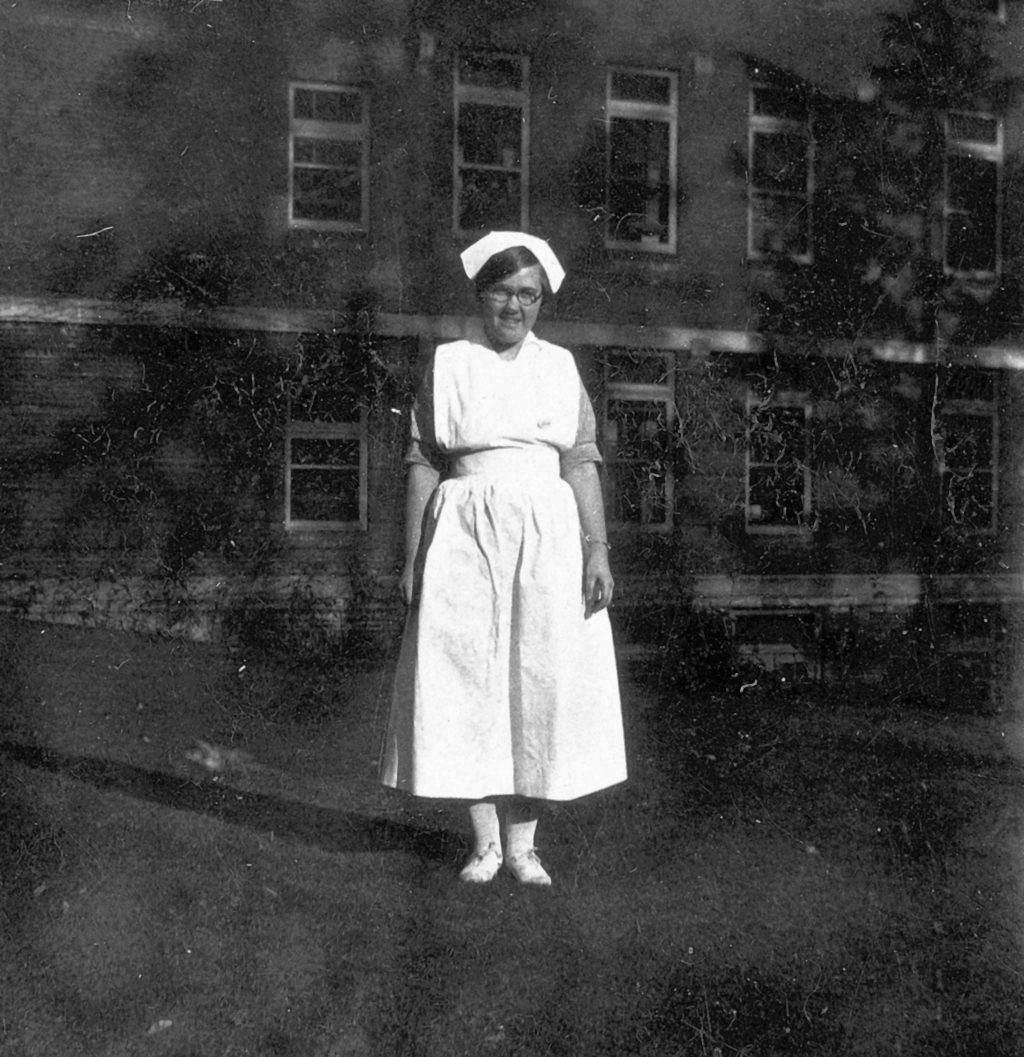I believe I was told at some point that Mom’s mother always wanted to be a nurse. If that is correct, it would explain Mom’s name—I believe I was also told Mom (Florence McClain) was named after Florence Nightingale. Maybe it was inevitable that she would become a nurse. Nevertheless, I admire her for taking that on at a time when it was not at all common for women to have a profession of any kind. Not only that, she always regarded herself as “dumb” (her word) primarily because her younger brother caught up with her in school and graduated from high school the same year she did. She was not dumb, but I imagine the academic side of studying nursing might have seemed at least a little intimidating to her just because she considered herself to be dumb. I’ve seen her nursing textbooks. This was not easy material for anyone.
It wasn’t just the academic material that made it difficult. At the time Mom was a nursing student, nursing education was done at hospitals. And the hospitals tended to view nursing students as a source of cheap labor. So in addition to classwork, student nurses worked long hours in the hospital.
In fall 1928 Mom enrolled in the three-year nursing program at Good Samaritan Hospital in Portland . She completed her nursing education in spring 1931 and got a job at Albany General Hospital.
The photos below were taken in early 1930, when Mom was about halfway through the program. I don’t know who took either photo (I don’t think Dad did). I assume in both cases the building in the background is part of Good Samaritan.

In the above photo, Mom is wearing her cool nurse’s cape. At least I always thought it was cool. See, nurses were superheroes before there were superheroes!

During the period that Mom was studying nursing in Portland, she and Dad kept up their relationship primarily through correspondence*, as I mentioned before.
*correspondence: Communication manually written with a pen or other implement on paper. The paper with manual writing on it was usually called a “letter.” The letter was folded and placed into an envelope. On the envelope was written the address of the recipient. A postage stamp was affixed to the envelope to show that the required fee had been paid, and the letter was deposited with an institution known as the US Post Office. The post office teleported the envelope to the recipient using technology that has since been lost. Using the lost technology these envelopes containing letters could get from a sender in Albany to a recipient in Portland in one day. Today’s US Postal Service no long has teleportation technology and has to move these envelopes using trucks, which is much slower. It can take two or three days to get an envelope from Albany to Portland now. This is why e-mail was invented. But then even e-mail became intolerably slow and texting and its cousin instant messaging were invented also. I figure at some point someone is going to invent a way to transmit our voices over long distances so we can just talk to each other and not have to type or write. I know that sounds pretty far-fetched. ;–)
You have me laughing till I’m almost crying, and I would be, except I don’t want to wake my wife up. 🙂
Loved your “superhero” comment!! Also thanks for the astute explanation of how the postal service worked then and now!!
Dear Lloyd,
After I recover from my laughing fit, I will read your post aloud to Annie, Craig, and Hannah. Thank you!!!
It was very good to see you and Carol this morning, and to get a bit of your news.
Love,
Donna